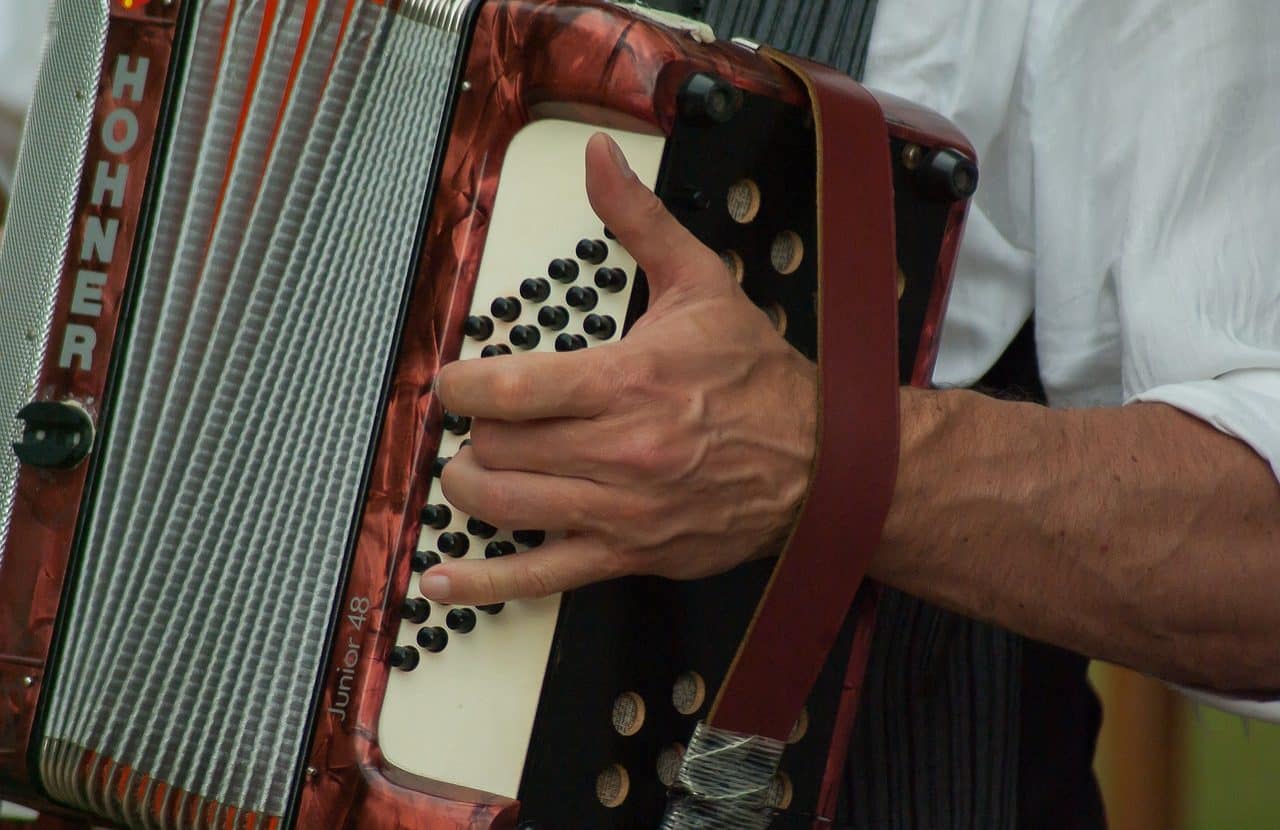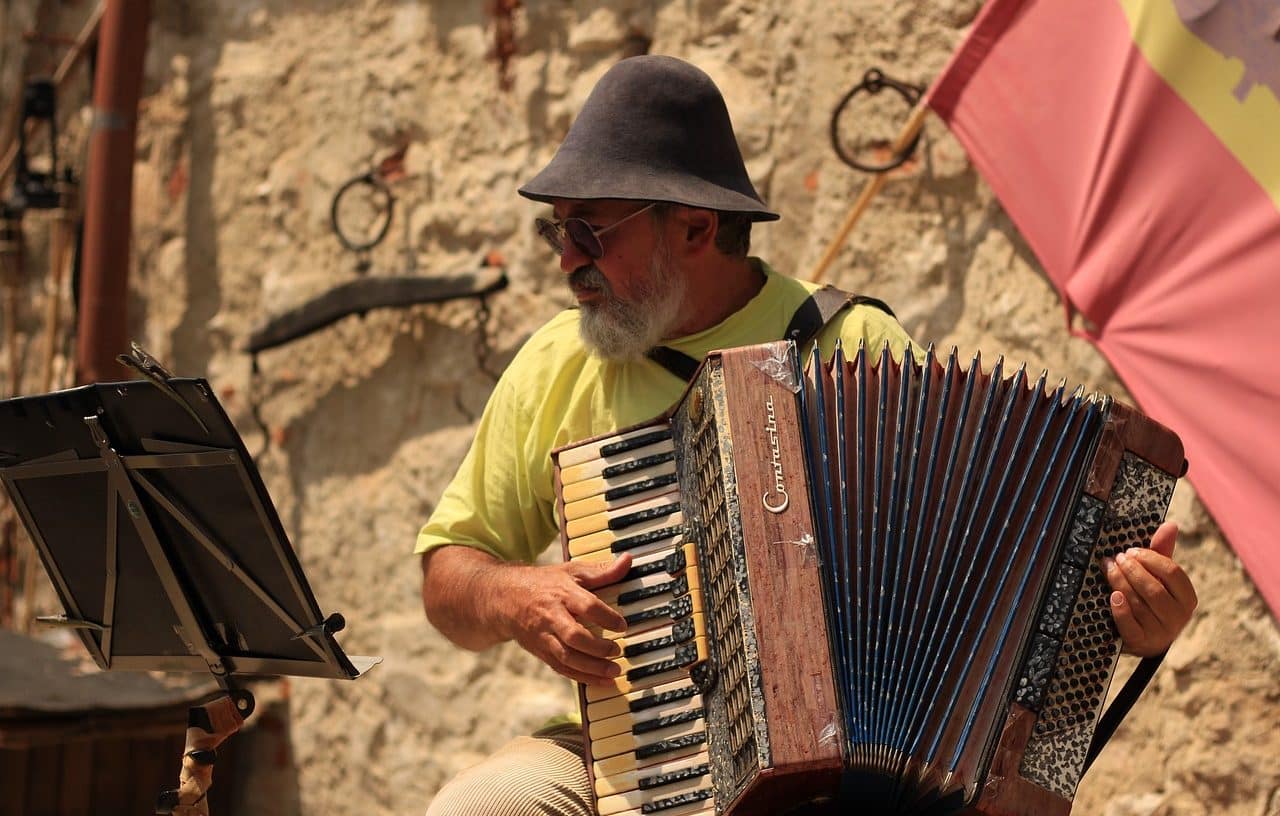
The accordion is a wind instrument.
The accordion is a musical instrument that is part of the group of wind instruments . It has a bellows closed by boxes at its ends, which house different keys or keys.
On the case that is held with the right hand, the accordion has a tuning fork that may have buttons (in the case of the chromatic accordion ) or keys similar to those of the piano (in the so-called piano accordion ). With the left hand, the musician can play other buttons that serve for accompaniment chords and bass sounds.
Unlike other wind instruments, the accordion does not require the person to blow to generate the sound. The accordion has a mechanism that, when the performer closes or opens it, allows air to pass through its structure and propel various reeds. The keys allow you to choose what type of sound you get.
Accordion, bandoneon and concertina
The origins of the accordion date back to the first decades of the 19th century . Its development meant that, over time , similar instruments emerged, although with different characteristics. In this context, it is common for many people to confuse the accordion with the bandoneon or the concertina .
One of the reasons why this confusion occurs revolves around the relative complexity of the accordion compared to other instruments, especially in terms of its design: since a large part of its keys are hidden under the musician's hands, the The public cannot appreciate the instrument in its entirety, and it is common to ignore certain basic details of its structure, something that does not happen with the piano or the violin , for example.
Regarding the bandoneon , it is another wind instrument, from the group of free reeds , which is related to the concertina. Its appearance is rectangular and its tone is very distinctive: anyone who has had the opportunity to listen to these three instruments does not usually confuse the sound they produce. Curiously, the original term in German is spelled bandonion , and it was in the Río de la Plata where the i was replaced by an e , although in everyday speech people tend to pronounce it as an i .
The concertina, for its part, is also a free-reed instrument, and its creation has two important milestones: its first appearance took place in 1829 , but almost two decades later a patent was published with certain improvements in its design. It generally has a series of buttons at each of its two ends, which are pressed in different directions than those of the accordion: in the concertina they are parallel to the bellows , while in the accordion they are perpendicular.

The accordion is used in various musical genres.
Learning and use
Although some claim that to play the accordion it is necessary to have advanced musical knowledge, there are also those who invite anyone who is curious about the instrument to venture into learning. The type of accordion most used by beginners is the piano , mentioned above.
The accordion is currently used in a large number of musical genres, such as merengue , cumbia , chamamé and cueca . The Mexican Julieta Venegas is one of the most popular accordionists. In Argentina , “Chango” Spasiuk and Antonio Tarragó Ros are two prominent musicians who play the accordion.
The accordion as a chop or machete
It should be noted that, according to the dictionary of the Royal Spanish Academy ( RAE ), in some countries the concept of accordion is used to refer to the notes that a student hides in an evaluation to be able to access the information without the teacher seeing it. .
Accordion, in this case, is synonymous with chop or machete , depending on the region.
